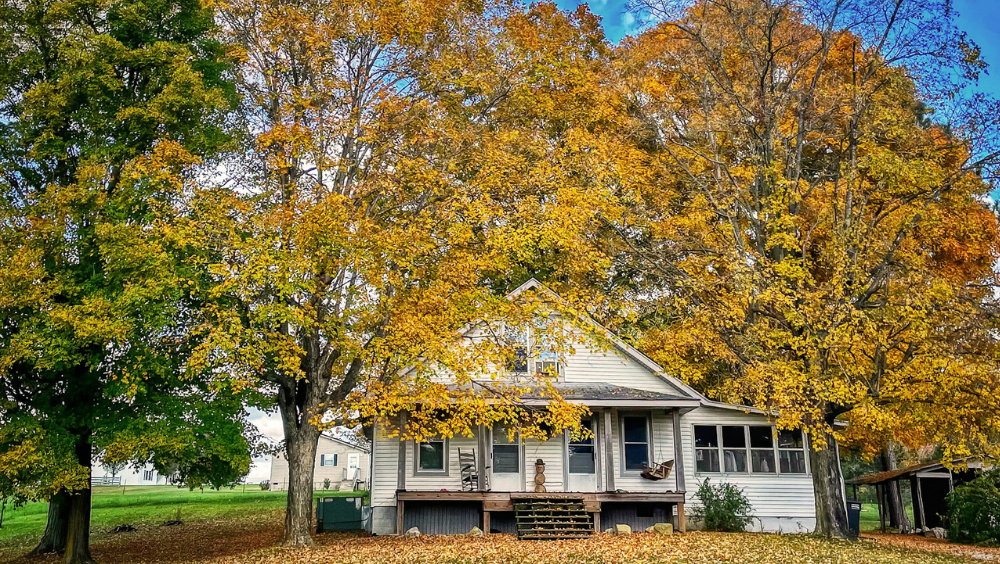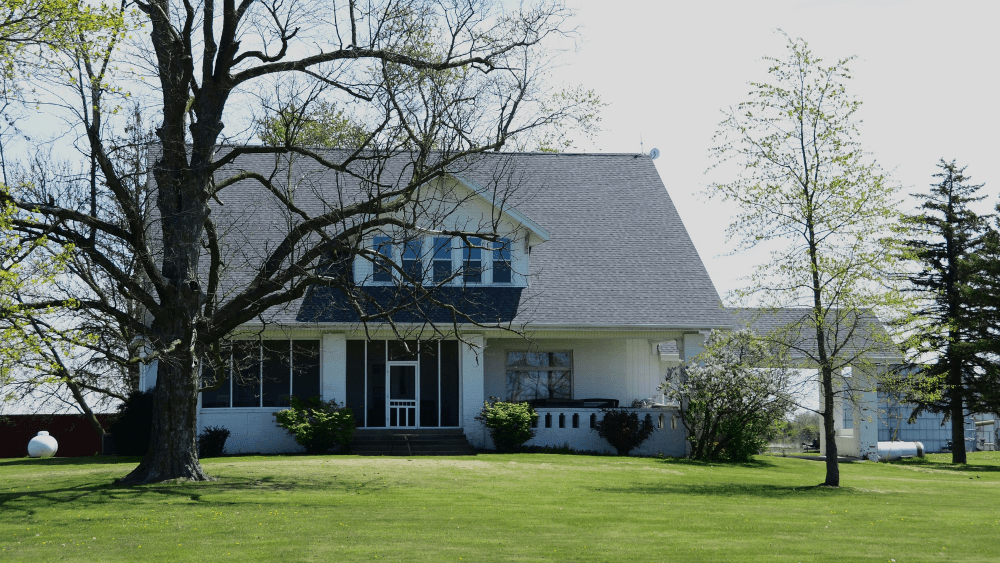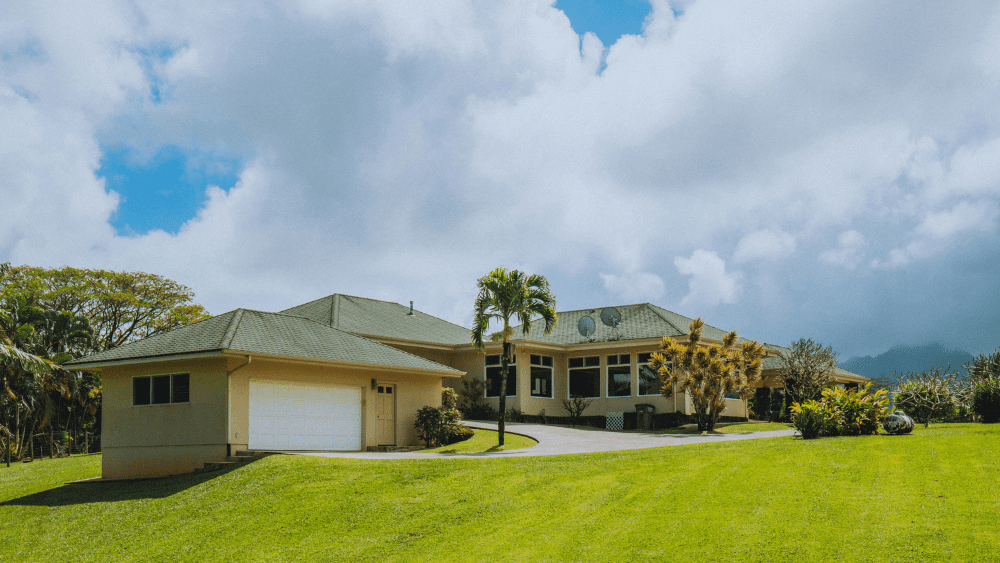From cozy train carriages and robust shipping containers to towering water tanks, disused bunkers, old schools, or grand factories, innovative designers and homeowners are throwing out the rulebook and reimagining the very essence of 'home'.
The concept of adaptive reuse architecture has exploded as homeowners become more conscious of sustainable design.
Water towers, shipping containers and even concrete bunkers are being converted into beautiful homes. Picture: realestate.com.au/sold
From shipping containers to train carriages and concrete bunkers, these repurposed projects showcase incredible ingenuity and a commitment to preserving history in innovative ways.
Breathing new life into discarded structures, these unconventional homes transform the forgotten into the fabulous. We step inside the world’s most unique adaptive reuse homes.
Train carriages
Often scattered across rural landscapes disused train carriages are finding new purpose as charming and, often surprisingly spacious, homes.
While appealing for their charm and mobility, PRD Real Estate chief economist and head of national research, Dr Diaswati Mardiasmo, said train carriage homes can present unique space and services challenges.
On the market: History lovers will enjoy this 482M carriage, which has been converted into a 2-bedroom home. Picture: realestate.com.au
“The cost of obtaining both the land to situate the carriage on, and the carriage itself, can be higher than expected. Depending on the rarity of the train carriage, they can cost about $10,000, plus transport up to $7,000 and then the cost of land," she said.
"Additional costs may include site preparation connection to utilities, and restoration of original features like timber panelling or vintage fittings. Plus, if the carriage is heritage-listed or located on heritage land, approvals from local councils would be required for any modifications.”
Typically suited to individuals or couples seeking a nostalgic, compact lifestyle or a unique short-stay accommodation offering, architects often highlight the linear nature of the carriage, which lends itself well to a galley kitchen and connected living spaces.
The linear nature of a train carriage lends itself to a galley kitchen and connected living spaces. Picture: realestate.com.au
A great example that’s currently on the market in the Victorian town of Cockatoo offers two bedrooms, a spacious open plan living and dining room and a fully renovated bathroom with a luxurious deep bath.
“Sliding the carriage door along those century-old brass runners sparks fond memories,” said local agent Mick Dolphin of First National Real Estate Ranges.
The entire carriage is protected by a full-length roof. Picture: realestate.com.au
“There’s original guard fittings, timber panelling and even the driver’s desk, but they now frame a light-filled kitchen, an open-plan lounge and two proper bedrooms.
"The carriage itself sits beneath a full-length roof, so the ironwork stays dry, and the deck stays barbecue-ready, whatever the Dandenong Ranges serves up!”
Water towers
Once landmarks of industry, disused water towers are now being reimagined as striking vertical homes.
Their cylindrical shape and elevated position offer incredible potential for unique layouts and breathtaking views and unique spiral staircases and multi-level living spaces are common features in these towering transformations.
“A great example is the formerly abandoned 1940s concrete water tower in the UK that was transformed into multi-million masterpiece,” Dr Mardiasmo said.
The cylindrical shape is all that reveals its history as water tower. Picture: Instagram @water_tower_conversion
Owner Rob Hunt spent just more than two years renovating the elevated structure, in the historic port town of Bideford in Devon, England, into a contemporary five-bedroom home with panoramic views over Devon.
Owner Rob Hunt as he began work on the abandoned water tower conversion. Picture: Instagram @water_tower_conversion
“The cost of converting a water tower to a home can vary significantly,” continued Dr Mardiasmo. “But generally ranges between $500,000 and $1 million. But the investment can be worth it."
The iconic conversion is yet to find a buyer, having been listed for sale for more than a year.
Closer to home, Adelaide’s Semaphore Water Tower — an 1880s structure built to supply water to the LeFevre Peninsula — is currently undergoing a conversion into short-stay accommodation and is an impressive adaptive reuse home example.
The landmark property is positioned in the heart of cosmopolitan Semaphore. Picture: realestate.com.au
Steven Tropoulos, group director at finance and property advisory consultancy business, Highfield Private, said the adaptive reuse project preserves the heritage-listed facade while reimagining the interior for luxury lodging.
“Its elevated panoramic views and cylindrical structure make it a standout example of historical reuse with modern functionality.”
Shipping containers
The humble shipping container has become a darling of the adaptive reuse movement.
Ranging from single units to multi-story modular structures, their inherent strength, ‘stackability’ and relatively low cost make them versatile building blocks for modern, minimalist homes.
“The container home showcases bold adaptive reuse in an urban setting,” said Mr Tropoulos. “However, there are planning and design considerations. Integrating industrial elements like shipping containers into residential zones requires compliance with local building codes and zoning regulations.
"Ensuring the structural soundness of the container within the existing building framework is crucial and, lastly, balancing the industrial aesthetic of the container with the residential character of the neighbourhood can be tricky.”
The use of shipping containers offers exceptional durability, the home is flood-free and has withstood tornado conditions. Picture: realestate.com.au
In recent years there's been no shortage of high-end shipping container conversions featuring sustainable materials and ultra-luxe inclusions for buyers with deep pockets, such as this showstopping home on Queensland's Tamborine Mountain.
However, it was a quirky seaside container home in South Australia's Port Neil which proved so popular with buyers its selling agent was forced to crowd-control its first and only inspection.
It sold earlier this year in just thirty minutes for $395,000.
Concrete bunkers
Offering unparalleled solidity and a unique sense of history, former military bunkers are being converted into surprisingly cozy and secure homes. Often subterranean or semi-buried, these structures present unique challenges around natural light and ventilation.
Bunkers offer protection from harsh heat and noise due to the thick concrete and steel exterior. Picture: realestate.com.au/sold
“Bunker conversions blend history with extreme minimalism,” said Dr Mardiasmo. “Embracing simple industrial materials, they appeal to individuals or couples seeking off-grid retreats, minimalist living, or unique short-stay accommodation options.
“A great example is the conversion of a WWII Dutch bunker conversion. The interior was designed with extreme spatial efficiency, using custom-built, foldable furniture and a minimalist aesthetic to make the most of the limited headroom and floor area.
"In Australia, bunker-style underground homes are growing in demand with a growing fear of bushfires and extreme weather events."
This converted bunker was built in 1941 by the Royal Australian Air Force to store fuel for its nearby Mildura base. Picture: realestate.com.au
In the Victorian town of Yelta, outside Mildura, a converted WWII bunker now stands as a four-bedroom home. It sold to a young couple during a hotly contested auction in 2019.



















 English (US) ·
English (US) ·